Hiring & Outsourcing to Grow Your Freelance Business
It’s so hard to decide when to hire or outsource tasks for your freelancing business. Running a small business is tough when you do everything yourself, but hiring is also tough (and expensive). So how do you know when you need help?
One question to ask yourself is “Do I have more money or time right now?” When you first start a business, it’s very common to have a lot of time on your hands because you don’t have a lot of billable client work. In the beginning, it usually makes sense to do a lot of things yourself. You likely don’t need to hire an accountant at $250/hour when you barely have anything to account for.
But on the other hand, when you are in a service-based business, time is money. The more time you spend teaching yourself Quickbooks Online and reading through sales tax code (insert painful groan), the less time you have to find clients and sell your services.
If you are constantly busy, working too many hours with no blank spots in your schedule, and you’re having trouble keeping up with all the work coming in, you definitely need help. The more you plan to grow, the more help you are going to need.
Hint: If you have a bunch of spare time on your hands as a freelancer, you likely need to spend more time on marketing and sales! Or maybe you need a different business model or pricing structure. We’ll talk about those later.
When it comes to getting help, keep in mind that doesn’t always mean getting full-time employees with health insurance. In fact, working your way up to employees is a more realistic option for people who are bootstrapping their businesses. So let’s talk about how you can get help.
Hire Robots
The first option for getting some help is to start with robots! Consider whether investing in some kind of software could help you save time. Are you spending an infuriating amount of time scheduling appointments every week? You definitely don’t need a full-time secretary, but it may be worth spending $25/month on some appointment scheduling software to do the dirty work for you. Even if the software seems expensive, if it allows you to be doing more valuable (not to mention enjoyable work), it’s worth it. And it’s a lot cheaper than hiring or outsourcing. There is software for practically everything, so think about tasks that are repetitive and computer based and do some research. There is likely a solution for you!
Hire Subcontractors & Vendors
Once you have outgrown software and artificial intelligence solutions, the next step is finding vendors and subcontractors to help. A vendor could be someone like an accountant or a virtual assistant, or another freelancer to help you with the billable work. Technically, all of those are considered subcontractors.
It’s much easier to justify hiring a subcontractor to do some billable design work for you than it is to hire an assistant to do admin work (straight overhead costs), but both can be valuable. You need to consider your goals and priorities when determining which kind of help you need. If you want to spend your day doing the actual work of your craft (i.e. writing, design, photography or whatever), outsource those boring admin tasks!
However, if you have visions of growing into an agency with multiple employees and being a boss, you may want to keep the admin tasks for yourself and hire another freelancer to start taking some of the billable work off your plate.
With any area of your business (design, marketing, accounting, sales, admin), the best thing you can do when you start out is to plan to get help at some point. Set up your files, tasks and systems in a way that would be easy to turn over to someone else should you outsource or hire someone.
That means, writing down your workflows, checklists, schedules, login credentials and anything you need to get the job done. It may seem silly to write instructions for yourself when you can just remember how to do something and your computer auto-logs you into all you important websites. But trust me: this is the most important piece to eventually getting help! No matter how much you train someone by telling or showing them how to do something, they will want and need written documentation to refer back to. Outsourced tasks will be done the way you want them and much more consistently if you have the appropriate documentation. Plus, that means you’ll have to do less micro-managing. Whew! Because let’s be honest, everyone hates a micro-manager.
In addition to documenting and systematizing, understanding how much time per week or month you are doing each type of task is vital to figuring out who you need to hire and how much you can afford to pay them. Especially if a task is something you dread, sometimes it can feel like you do that task more often than you actually do.
Don’t guess how often or for how long you are doing something you want to outsource. Time yourself and keep track for a month or two so you make sure you are getting help where you actually need it.
Several years ago my aunt retired early and expressed interest in my business. I knew she’d be great to work with, so I hired her to work part time doing various admin tasks, social media and quality assurance. I guessed that I had about 15 hours of work a week for her. But it turned out many of those tasks I thought I was doing a lot came up only once every few months. She didn’t have as many hours of work as I had promised, and I was always scrambling to find things to keep her busy.
Compound this problem with the fact that I didn’t have ANY written documentation, and I set us both up for a very difficult situation. She didn’t have what she needed to do her job, and I felt like it was work to give her work!
I often spent more time answering questions and double checking work than it would have taken me to do the task myself.
If the person you hire has only one type of task that is repeatable and frequent enough, you may be able to get away with not having to write it down. But when their job is a patchwork of five different job titles, the only way for them to be successful is if there is exact written instructions for each task that they can refer to. When you only do something once every month or every two months, even if you train someone how to do it, it’s nearly impossible to retain that information when there are tons of other different tasks a person must also learn. Don’t put it on them to take good notes during training. Write down exactly how you want it done and everyone will be much happier.
Hire Employees
When you get to the point in your business where you are ready to take on a business loan, get investors, or you have a good chunk of change in the bank, you may be ready for employees.
Having employees is a serious deal, so you’ll need to have some cash at your disposal one way or another before you hire. If they are on salary, you are guaranteeing someone a certain number of hours (whether you actually have enough work for them or not), and you have to pay them for their time.
You will need some cash to buy the tools and equipment the employees will need to do their job (i.e. computers, desks, office supplies, extra software licenses, etc.) You will need to be able to cover the first several months of this person’s employment while they are learning the ropes. Usually an employee is not going to become “profitable” for a while. Depending on how experienced the person is—and how good your training is—you could spend months basically doing their work alongside them or closely double checking everything to make sure things are getting done correctly.
This will likely be super frustrating because you were already super busy before you hired someone, and you will feel just as busy (if not more) after you hire someone. You will feel like you are paying someone big bucks to do something that would have been faster and better if you had just done the work yourself. It’s normal to feel that way, but you need to be prepared to invest money, time and emotional energy into getting the new person up to speed before they will start paying off.
In addition, you’ll need money to cover your bills (and their paycheck) when clients are late on paying you. Imagine you have a huge client who is two months late on their bill, but you had to pay your employee who did the work 3 months ago. Again, money in the bank is important so you can weather these cash flow crises.
The more people you hire at once, the more investment it will take. But keep in mind you don’t necessarily need to hire someone full time for them to be an employee. Part-time and hourly employees are totally fine.
My first “real” hire was a part-time employee who came to the office 20 hours a week. I couldn’t afford to offer health benefits (which you aren’t legally required to do until you have at least 50 employees), so instead I offered profit sharing.
However you get help—robots, subs or full-on employees—what remains true is you need to have your shit together before entering into a new relationship. Be prepared to invest in help. And then sit back and enjoy your new circumstances of not having to do every single thing yourself!
Should You Hire Subcontractors or Employees?
The difference between an employee and contractor isn’t always cut and dry, but the IRS has a good web page explaining how each is classified based on several factors.
There are benefits to having both contractors and employees on your team. Here are the pros and cons of each:
The Pros and Cons of Hiring Contractors:
Pros:
- Work as needed per project.
- Predictable cost built in to each project.
- You can have a pool of people to choose from based on the project requirements.
- Motivation may be higher when they need the work.
- Simple paperwork.
- Easier to end an unsuccessful relationship.
Cons:
- Not always available when you need them.
- Tend to be shorter term.
- You have less control of exactly how the job is done.
- They may prioritize their own business and other clients over yours.
- More expensive hourly rate.
The Pros and Cons of Hiring Employees:
Pros:
- More dependable and predictable work schedules.
- Higher commitment to your business.
- More control of exactly how the job is done.
- Have company loyalty and may promote your brand.
Cons:
- More expensive overhead (insurance, equipment, accounting fees).
- More paperwork and legal stuff.
- Productivity and motivation may wane over time.
- Burnout more likely.
- Full-time employees may expect benefits like health insurance.
Whether you hire employees or contractors, I recommend hiring and recruiting just like you would if you were hiring a full-time employee. Many people hire contractors by simply posting the details of the project on a gig website and then choose based on price without considering the person actually doing the work. Finding one-off contractors every time you need something done is not only exhausting, it’s ineffective and expensive.
Instead, do real interviews, skill tests and actually recruit subcontractors whose work you admire. You’ll not only get higher quality candidates, you will build a team of folks who plan to stick around.
Important Note: Be careful how you talk about the job and how you handle subcontractors to make sure you’re not breaking any of the IRS rules that determine whether someone should be classified as an employee.
The switch from a “1099 contractor” to a “W2 employee” is a big one when it comes to paperwork and administrative headaches.
Sometimes it is hard to tell whether someone working for you is a subcontractor (aka independent contractor) or an employee. It’s important to understand the difference as you can get in trouble (and big fines territory) if you call someone a contractor who is technically an employee.
If I’m being perfectly honest, I’ve no doubt toed the line a little too close over the years when it comes to this distinction. It’s not because I’m trying to avoid paying taxes or trying to take advantage of some poor sap contractor. In fact, it’s a much sweeter deal to be one of my subs than an employee in many ways.
All the subcontractors I’ve hired have to do their own taxes and buy their own equipment for their other clients anyway, so I’d rather pay a sub $50/hour to cover all that than to pay an employee $25/hour and do the tax and insurance paying myself. It’s just such a pain in the ass to have to run payroll and file all that paperwork, I’d just rather not have to mess with it!
But with that said, don’t push it! The government will hunt you down and kill you…well probably not, but you may be slapped with a crippling fine and have to pay years of back taxes. Yikes!
Below are a few key difference between subcontractors and employees. To read it straight from the horse’s mouth, check out this link
Contractor:
- Work on projects with a beginning and end
- Provides their own equipment (i.e. computer, software)
- Have a business entity and pay their own taxes
- Free to seek out business opportunities and have their services available to the market
Employee:
- Relationship is considered indefinite
- Uses company equipment
- Taxes paid through regular paychecks provided by company
- Provide services which are a key activity of the business
- Required to follow company policies including when and where they work





Leave a Reply
Want to join the discussion?Feel free to contribute!